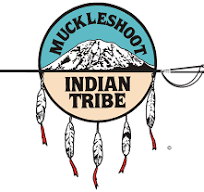Dearborn House Healing Garden Project
Project Mission
Historic Seattle is striving to create a space for community to connect with nature and learn about plants, as well as appreciate the First People and their descendants who understand and connect with these plants through medicine, storytelling, food, and much more.
Healing Garden Renovation
At Historic Seattle, our focus is often on buildings and the stories that echo through them. But let us not forget about the stories that the land around each building tells. As a preservation organization, we have neglected to extend our mission of saving meaningful places that foster lively communities to Indigenous communities. This project is an initial step in honoring the culture of the Coast Salish peoples and shining a light on their contributions to the lively communities of the past, the present, and the future.
We are excited to partner with Tahoma Peaks Solutions’ Valerie Segrest to provide a more complete and transparent historic narrative of the land of the Coast Salish peoples upon which the Dearborn House was built in 1907. Through the use of plants and interpretative signage, the Healing Garden will help to teach visitors about the land’s original stewards’ history of medicine, cuisine, and culture.
Our Consultant
Valerie Segrest is co-founder of Tahoma Peaks Solutions, a Muckleshoot Tribe member, and a Food Security Advocate who has extensive knowledge in plant and human relationships. Her recent work includes design of the native plant gardens that are a feature of the current redevelopment of the Seattle waterfront. Her experience and knowledge are invaluable resources for planning this garden renovation project at the Dearborn House. Equally valuable is her unique ability to communicate and demonstrate the plant-human synergy that is foundational to the Coast Salish people.
Funders
This project funded by generous individuals, a Neighborhood Matching Fund award from the Seattle Department of Neighborhoods, the Northwest Horticultural Society, and the Muckleshoot Indian Tribe.
Progress
As of Spring 2024, changes are visible at the Dearborn House. Look out for:
-Removal of overgrown and neglected shrubs
-Reconfiguration of planting areas to support an immersive flow of the outdoor space
-Soil amendments
-First round of planting
Phase one of the new healing garden is taking place Spring/Summer 2024 . Stay tuned for updates and plans on phase two!
December, 2024 – Update
Our landscape at the Dearborn House has changed drastically over the last year. Today, what you find surrounding the house is a closer representation of what might have existed many years ago. The grounds are full of young, pacific northwest native plants. Although things might look sparse, these plants will eventually grow to be immersive gardens full of biodiversity. Each plant brings its own magic to the landscape, whether it’s birds feeding on berries or a key host plant for a pollinators lifecycle.
Last Fall, Historic Seattle partnered with Seattle University’s Dr. Rob Efird’s Nature and Culture class to plant the garden and begin creating a winding footpath. We want to extend a huge THANK YOU to Dr. Rob Efird and his students for such a beautiful partnership in establishing this new garden. Not only did students help plant, they also helped to conceptualize what future signage might look like for visitors.
What is still to come:
- Signage displaying plant nomenclature and Lushootseed translation
- Corresponding webpage development with Healing components of each plant
- Soil amendments and gradual lawn replacement with native ground cover
Plants included in the second phase Fall planting were:
| Salmonberry |
| Thimbleberry |
| False Lily-of-the-valley |
| Devil’s Club |
| Saskatoon Serviceberry |
| Tall Oregon Grape Holly |
| Blue Elderberry |
| Kinnikinnick |
| Wood Sorrel |
| Nootka Rose |
| Goatsbeard |
| Yarrow |
| Wild Ginger |
| Woodland Strawberry |
| Stinging Nettle |
Questions about the project? Contact Horticulture Manager, Megan Stanek at [email protected]
Garden plan: Megan Stanek

